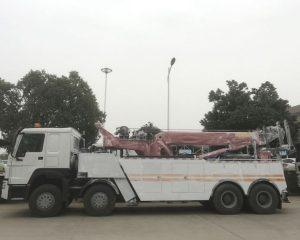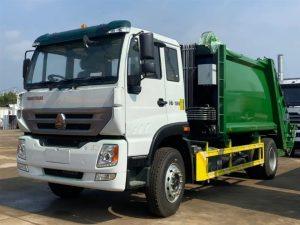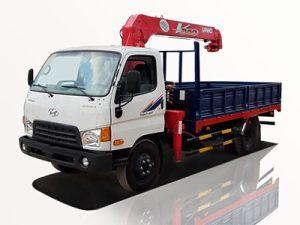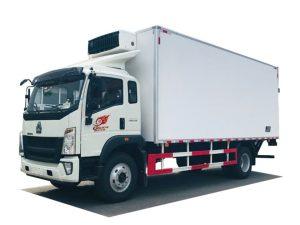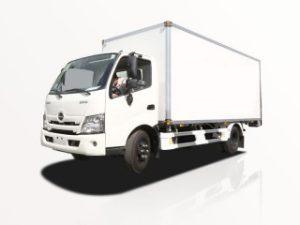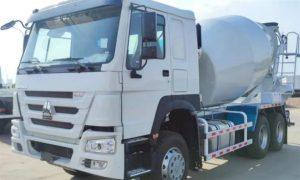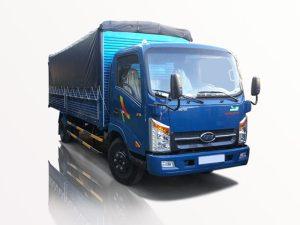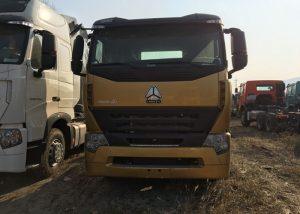Monday to Saturday - 8:00 -17:30
Understanding Non-CDL Trucks: Your Comprehensive Guide
Non-CDL trucks play a vital role in transportation, logistics, and delivery services. These vehicles offer versatile options for small businesses and individuals looking to transport goods without the need for a special license. In this article, we will delve into the definition of non-CDL trucks, their regulations, benefits, types, and other essential considerations. Whether you’re a business owner or someone interested in learning more about vehicles classification, this guide will provide you with all the necessary information.
What Are Non-CDL Trucks?
Non-CDL trucks are vehicles that do not require a commercial driver’s license (CDL) to operate. In the United States, the regulations governing the need for a CDL vary by state but typically apply to vehicles that have a gross vehicle weight rating (GVWR) of 26,001 pounds or more, or if the truck is designed to transport 16 or more passengers, including the driver. Non-CDL trucks are generally classified as:
- Light-duty trucks (GVWR under 26,000 pounds)
- Vans
- Pick-up trucks
- Box trucks under the weight limit
Why Choose Non-CDL Trucks?
Convenience and Accessibility
One of the main benefits of non-CDL trucks is their accessibility. Since they do not require a special license, more individuals can operate these vehicles, making them an excellent choice for small businesses that may not have the resources to hire specialized drivers.
Cost-Effectiveness
Non-CDL trucks typically come at a lower cost compared to CDL trucks, both in purchase price and operational expenses. For businesses dealing with lower loads, this can translate into significant savings.
Flexibility
Many non-CDL trucks can be used for various purposes, from moving furniture to delivering goods. This flexibility makes them an excellent choice for a range of industries, including retail, construction, and logistics.
Types of Non-CDL Trucks
Light-Duty Pickup Trucks
Light-duty pickup trucks are among the most common types of non-CDL trucks. They are suitable for a variety of tasks, including personal use, light hauling, and small business operations. Examples include the Ford F-150, Chevrolet Silverado, and RAM 1500.
Box Trucks
Box trucks are perfect for transporting goods on a larger scale but still fall under the non-CDL category if they maintain a GVWR under 26,001 pounds. These trucks typically have a cargo area that is enclosed, offering protection from the elements. Common models include the Isuzu NPR and Ford E-Series Box Truck.
Vans
Vans, including cargo vans and passenger vans, can also be classified as non-CDL trucks, depending on their weight. They offer an excellent option for businesses that require additional passenger space or cargo flexibility.
Utility Trucks
Utility trucks, commonly used by service providers (like electricians and plumbers), often come with special features like toolboxes and ladders. As long as they qualify under the weight restrictions, they do not require a CDL to operate.
Getting Started: How to Choose the Right Non-CDL Truck
Assess Your Needs
Before selecting a non-CDL truck, it’s essential to identify your specific needs. Consider factors such as:
- Type of cargo
- Expected load weight
- Frequency of use
- Operating environment (urban vs. rural)
Evaluate Costs
Keep in mind the total cost of ownership, which includes maintenance, insurance, fuel, and initial purchase price. Doing your homework in advance can help you paint a clearer picture of what your long-term costs will look like.
Research Specifications
Understand the specifications of various truck models you are considering, comparing factors like fuel efficiency, cargo space, reliability, and resale value. Websites, reviews, and professional publications can provide valuable insights.
Test Driving
Finally, it’s important to test drive any vehicle you are seriously considering. This gives you a direct sense of the truck’s performance, comfort, and handling. Be sure to test it under conditions similar to how you will typically use it.
Common Regulations for Non-CDL Trucks
Weight Limitations
As mentioned earlier, non-CDL trucks must have a GVWR of less than 26,001 pounds. Always check the specific limits that apply in your state as they may differ.
Insurance Requirements
While non-CDL trucks don’t require a commercial driver’s license, they do require appropriate insurance. Typically, businesses will need liability insurance, but additional coverage options may be considered based on the nature of the operations.
Local Restrictions
Always be aware of local laws that may affect truck operation in your area. Some cities hold specific regulations for commercial vehicle parking or zoning laws that could impact your operations.
Examples of Common Uses for Non-CDL Trucks
Moving Services
Many moving companies utilize non-CDL trucks for residential and small-scale commercial moves. The cargo space is adequate for transporting furniture and boxes, and the absence of a CDI requirement allows for more flexibility in staffing drivers.
Delivery Services
Businesses such as florists, bakers, and e-commerce companies often use non-CDL trucks to deliver goods directly to customers, making it easier for them to expand their delivery area without the burden of additional licensing.
Construction and Landscaping
Non-CDL trucks are common in the construction and landscaping sectors, where they are used to transport tools, equipment, and materials. Their weight capacity makes them suitable for moving supplies while staying compliant with weight regulations.
Maintaining Your Non-CDL Truck
Routine Inspections
Regular inspections are crucial to ensure the truck operates safely and efficiently. Key areas to check include:
- Brakes
- Lights
- Tires
- Fluid levels
Scheduling Regular Maintenance
Following the manufacturer’s maintenance schedule is essential for extending the life of the vehicle and preventing costly repairs down the line. Regular oil changes, filter replacements, and tire rotations should be a part of your routine maintenance.
Keeping Records
Maintaining thorough records of all maintenance and repairs can help with resale value and insurability. It also ensures that you keep up with service intervals.
Frequently Asked Questions (FAQ)
1. What is the maximum weight for non-CDL trucks?
The maximum gross vehicle weight rating (GVWR) for non-CDL trucks is typically less than 26,001 pounds.
2. Do I need a special license to drive a non-CDL truck?
No, you do not need a commercial driver’s license to operate a non-CDL truck, but you must have a valid driver’s license.
3. What types of non-CDL trucks are available?
Common types include light-duty pickup trucks, box trucks, vans, and utility trucks.
4. Can I use a non-CDL truck for business purposes?
Yes, non-CDL trucks are often used for various business purposes, including delivery and transportation of goods.
5. Are there specific insurance requirements for non-CDL trucks?
Yes, you will need liability insurance and possibly other forms of coverage, depending on how you plan to use the truck.
6. How can I ensure my non-CDL truck lasts a long time?
Regular maintenance, timely repairs, and routine inspections are essential for prolonging the life of your non-CDL truck.


